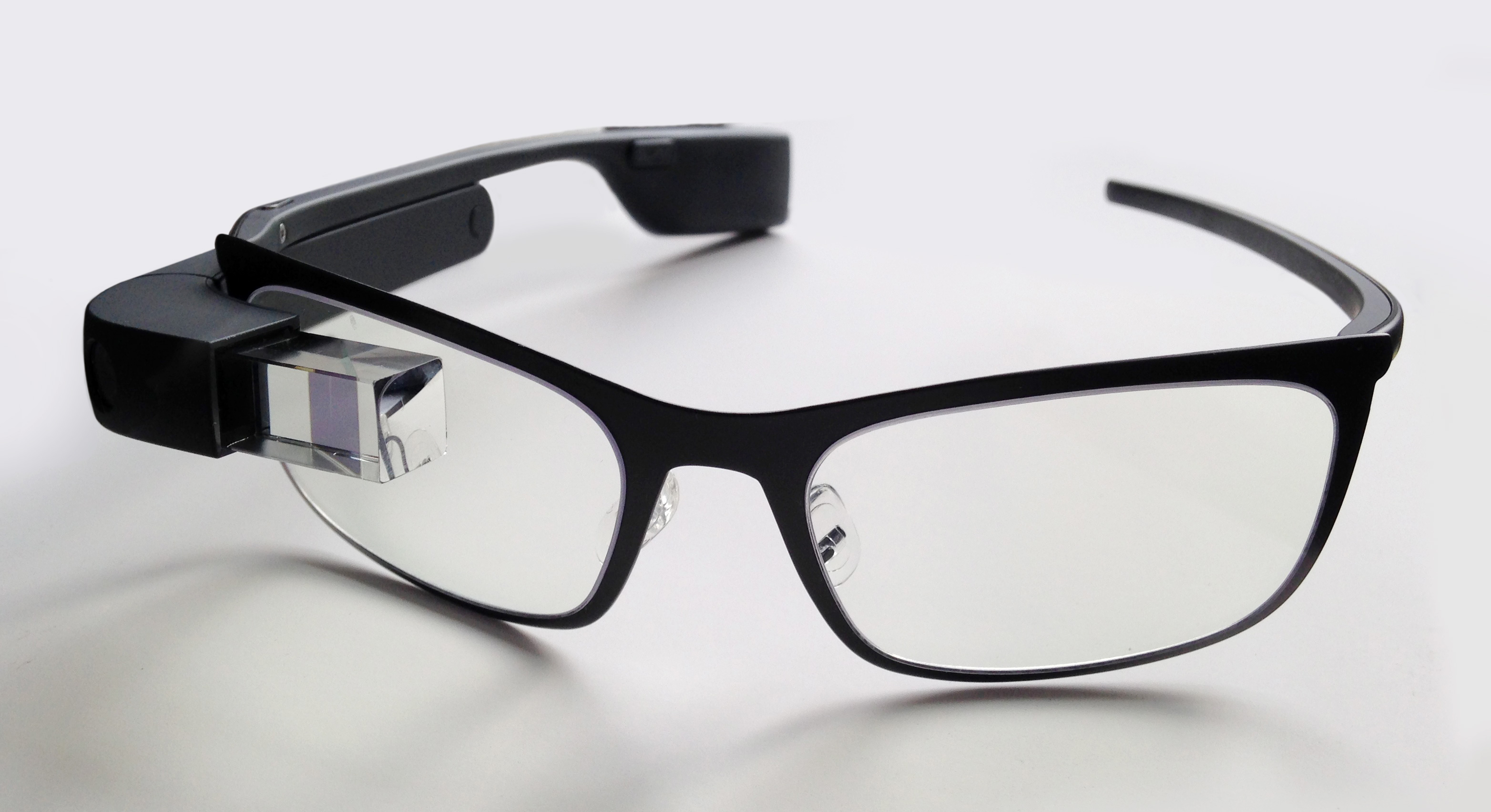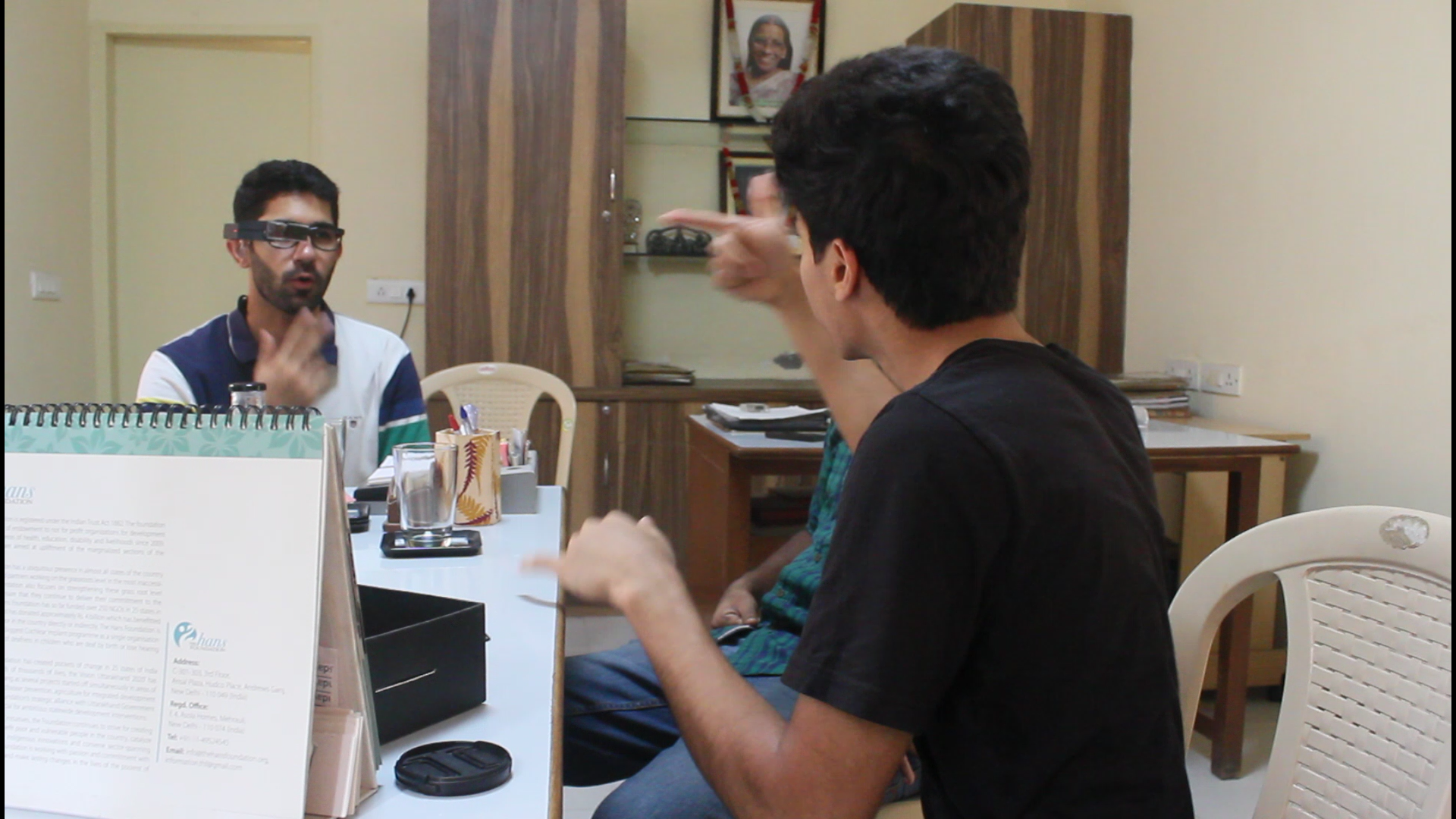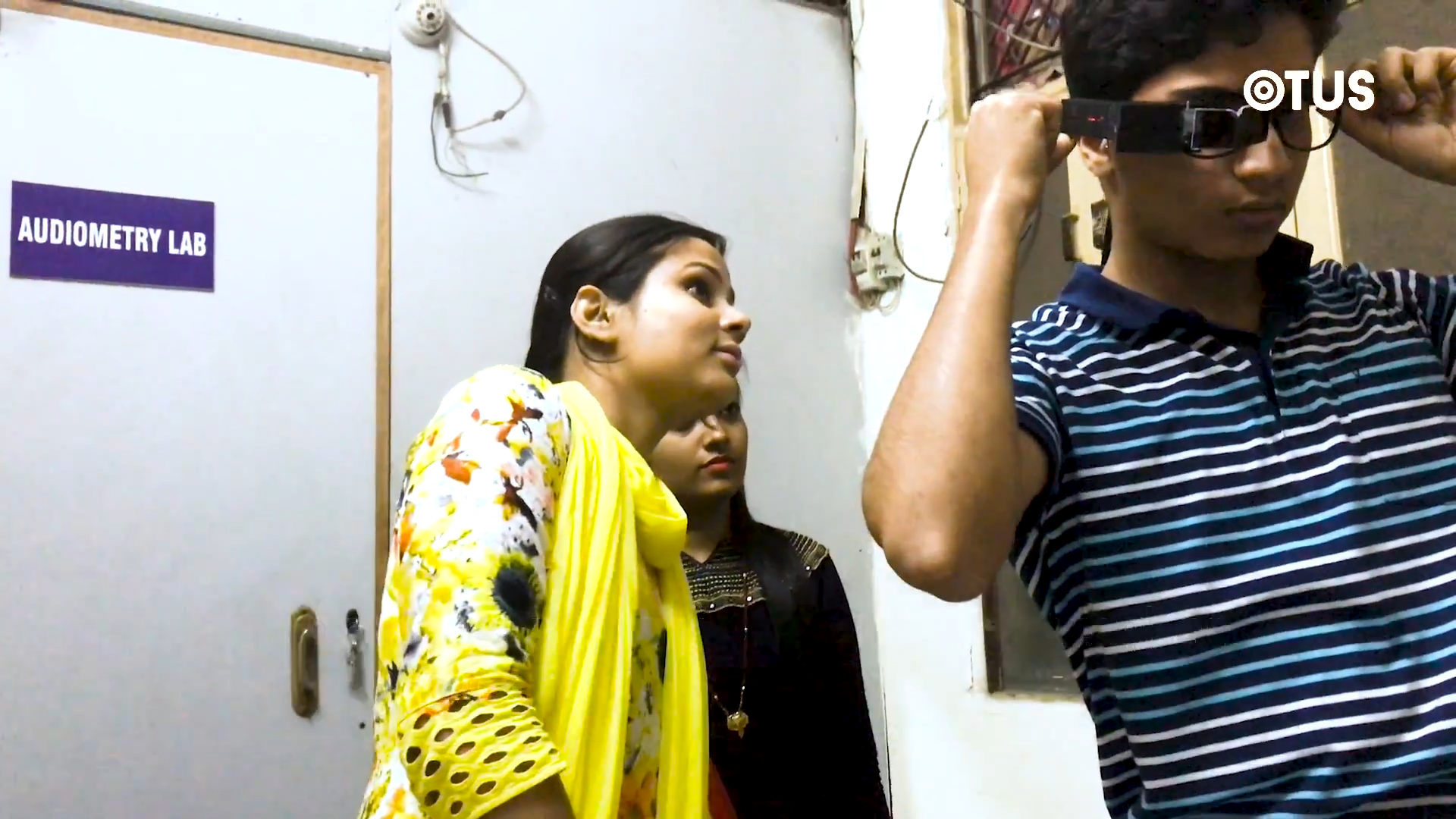Delhi Teen Invents Glasses That Could Revolutionise How the Deaf Communicate!
The 17-year-old's unique low-cost innovation will allow deaf people to see the words they cannot hear!

When I was a 17-year-old, the only thoughts on my mind were college admission and the upcoming football World Cup. For Madhav Lavakare, who turned 17 last month, it was the thought of developing a product that would help people with severe hearing impairments communicate with society.
When thoughts become things, and innovative technology leads the charge, what you have is a potentially game-changing product. Inspired by the famous, but very expensive, Google Glass, Madhav is in the process of developing low-cost “hearing glasses” or what he calls ‘Transcribe,’ which will allow people who are hearing impaired, to see the words they cannot hear.
A student of Sanskriti School in Chanakyapuri, New Delhi, Madhav grew up with an insatiable desire to solve problems. Growing up in Palo Alto, California, which is the economic focal point of Silicon Valley, may have played a role in developing his love for innovation.
“I was a 6-year-old when I invented a solar-powered oven—my very first invention—in Palo Alto. I’ve always had a passion for building things with my hands, tinkering and inventing eccentric new gadgets and whimsical innovations,” says Madhav, speaking to The Better India. “My motive has always been to solve problems, no matter what the obstacles!”

The story of how he came to build a solar-powered oven at age six also lends insight into Madhav’s mind when he says that his sole motive is to solve problems.
“When I was six, my parents wouldn’t allow me to use the oven. They felt it was too dangerous for a child. So, I treated that as a problem and set about solving it. I came up with a solar-powered oven, made of aluminium and cardboard, and was able to bake the cookies that I had always wanted to. Problem solved, right? Although, the cookies were a little ‘kaccha,’” says Madhav with a wry smile.
Madhav’s family moved back to Delhi when he was an 8-year-old. By the time he was 13, he had developed a sensor-driven and voice-controlled home automation system, which would allow him to shut the lights and fans in his room without moving around too much.
He developed this system because he was tired of his parents constantly telling him to switch off the lights and fans in his room. His parents say that their friends wanted to buy his device for their children. At the time, Madhav was experimenting with the Raspberry Pi, a tiny, affordable computer that you can use to learn to programme. In fact, he began coding and taught himself Python and Objective C (programming languages) from free online courses off the internet.
“Every time I set about building and creating something new, I’m always trying to solve a problem. Solving problems in an unorthodox and creative manner while doing what I love—building and tinkering—gives me unparalleled joy,” Madhav tells The Better India.
Little surprise that this passion gave birth to his latest obsession, which he has taken to another level. When Google Glass hit the market in 2013, Madhav fell in love with it.

“It was such a beautiful piece of technology. Not aesthetically, but in terms of the concept. But there was a big problem, especially for people in India. Priced at $1500 a pop, who was going to buy this product,” Madhav asks.
Even though the Google Glass was out of reach for a young Madhav, he began religiously following the product’s progress in the market, reading articles and watching hundreds of videos. Unfortunately, the product never took off in India.
Madhav believes that product never took off because of its unaffordability. Motivated by the notion of how this product could assist those with serious hearing problems, he came up with the idea of developing affordable smart glasses.
The ‘Transcribe’ is the product of basic physics concepts, cheap electronic parts, perseverance and innovation. This is how Madhav describes the technology behind his hearing glasses:
“The hardware is based on a cheap Arduino (an open source computer hardware and software company) microchip that does most of the computing. This is connected to a Bluetooth module and a small OLED screen. I have developed a rudimentary Android application that utilises Google’s Speech API (application programming interfaces) to convert speech to text. The API supports over 132 languages as of now. Once the speech is converted to text, the data is then sent to the Arduino via the phone that connects to the glasses Bluetooth. It is then displayed on the OLED screen which sits on the side of the body. An image of the screen is then replicated onto a transparent screen in front of the user’s eye, using careful optics to ensure the image is enlarged and far in front of your eyes.”
The application of the lens formula he had learnt from his Class X physics classes and the utilisation of the latest in microchip technology have enabled Madhav to develop two prototypes.
He is currently working on his third prototype. “The case has been designed using CAD and 3D print, and is detachable, which means you can attach the device to any glass frames, empty or with lenses, of a specific power,” Madhav tells TBI.

Developing these hearing glasses in India, however, was a real struggle. He tells us that developing the necessary hardware was an extremely arduous task. Despite all the national conversation surrounding technology and innovation, Madhav paints a rather different picture.
The initial challenge was to source cheap electronic parts. Unable to source cheap, yet critical, electronic parts compelled him to place orders from different countries. Sometimes these orders take months to arrive, and on the odd occasion, they are held up at customs.
“In India you see a lot of people building software, writing code—and there’s a lot of support available for that—but for developing hardware, there is little experience, let alone infrastructure and expertise,” said Suman Saraf, computer engineer and co-founder of Android emulator BlueStacks to Otus Live, a video-led digital media platform
Making matters harder, Madhav was initially unable to find dedicated maker spaces or labs for people to work on hardware projects off their own volition.
“For now, me and many others wanting to create and make hardware projects have to figure out how to get by with ‘jugaad’, improvisation, and cutting corners,” he says.
For example, he was unable to develop the transparent screen for his glasses because he couldn’t find acrylic sheets with certain size specifications for the lens. Instead, he took out the acrylic sheet of a CD box that he needed to cut as per the size specifications of his hearing glasses.
“If I was living in the Bay Area, I would go down to the local hardware shop, get it cut by the machine, and everything would be done in 30 minutes,” he says.
However, it took nearly a week of trawling through the internet and visits to various markets before he landed up in the Kotla Mubarakpur area in search of electric plate cutters. After walking around various street corners, he landed up at a basement workshop, where they had one.
“Unfortunately, he (the cutter) ended up breaking my acrylic sheet. In the end, I went home and had to do it myself, using a paper cutter and spending hours cutting away at the plastic.”
What about the end user? Madhav has reached out to the National Association of the Deaf, several schools for children with hearing disabilities, non-profits like the Suniye Support School for Hearing Impaired and various individuals with similar problems.

Through the interviews, feedback and surveys he conducted in the process of developing the first two prototypes, Madhav has garnered some critical insight into the needs of the end user.
“Users like the idea of having the captions come in their field of view. I designed the device this way so that users can focus on everything else in their surroundings, look at the person they are communicating with, understand non-verbal cues and incorporate visual feedback,” he says.
Also Read: Internet Access 100 times Faster Than Wi-Fi? The Story Of An Indian Start-Up
So, how much do his “hearing glasses” cost? He has priced it at a cool Rs 3500, which isn’t bad considering he built it at the cost of Rs 2500. Compared to Google Glass, which costs $1500 (a shade over Rs 1 lakh), this low-cost assistance device could really help people who come from a low-income background.
Eventually, Madhav wants to scale up his operations and looking for potential investors in this regard. He is currently in talks with a few potential investors for seed funding that will enable him to develop better prototypes and find programmers who would help him assist on the software side. A crowdfunding campaign to support this endeavour will start soon, he adds.
Source: Otus Live
In a country which has 60 million people with hearing impairment, many of whom cannot afford a Google Glass, the Transcribe comes as a low-cost device which will enable many to better interact with society. There is both a need and market for such a device.
“The next step is to scale up my operations. I aim to achieve this by working with more organisations that assist the deaf to test the device further and receive valuable feedback. I will then incorporate this feedback into many new iterations of the prototype,” he says.

What about the immediate future? What about school?
Madhav initially wanted to dedicate the next three or four years after school to work on his product. His parents weren’t excited about the idea, and in a settlement of sorts, Madhav decided that he would attend college while continuing to work on his product.
Here is an exceedingly bright young innovator whose innovations could assist millions of Indians. Support him, and you could make a difference in the lives of those with hearing impairments.
You can get in touch with him via email: [email protected].
Inspired by his story? If you wish to lend a helping hand click here.
(Edited by Gayatri Mishra)
Like this story? Or have something to share? Write to us: [email protected], or connect with us on Facebook and Twitter.
NEW: Click here to get positive news on WhatsApp!
If you found our stories insightful, informative, or even just enjoyable, we invite you to consider making a voluntary payment to support the work we do at The Better India. Your contribution helps us continue producing quality content that educates, inspires, and drives positive change.
Choose one of the payment options below for your contribution-
By paying for the stories you value, you directly contribute to sustaining our efforts focused on making a difference in the world. Together, let’s ensure that impactful stories continue to be told and shared, enriching lives and communities alike.
Thank you for your support. Here are some frequently asked questions you might find helpful to know why you are contributing?


This story made me
-
97
-
121
-
89
-
167














